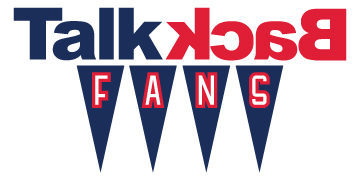The one league that could get into November with all of their coaches in tact . . .
#31 Detroit Red Wings (2-7-2, -18, LW: 31)
#30 Philadelphia Flyers (4-7-0, -14, LW: 25)
#29 Los Angeles Kings (3-7-1, -17, LW: 30)
#28 New York Rangers (3-7-1, -10, LW: 28)
#27 Florida Panthers (2-4-3, -7, LW: 29)
#26 Anaheim Ducks (5-5-2, -4, LW: 20)
#25 St. Louis Blues (3-4-3, -3, LW: 27)
#24 Ottawa Senators (4-4-2, -4, LW: 16)
#23 Chicago Blackhawks (6-3-3, -2, LW: 15)
#22 Calgary Flames (6-5-1, -2, LW: 10)
#21 Washington Capitals (5-3-2, +2, LW: 13)
The defending champs are really suffering a hangover on the defensive side. Despite ranking second in goals per game and first in power play percentage, they rank 23rd in goals allowed per game and 26th in penalty killing. But hey, when you win the first championship in franchise history and snap a long championship drought for your city you should be allowed a reprieve.
#20 Carolina Hurricanes (6-4-1, +3, LW: 18)
The Canes parted ways with long time goalie and 2006 Conn Smythe winner Cam Ward after 13 seasons. Despite that they are playing well even with a very pedestrian .888 save percentage. Why? Well, partly because a young Sebastian Aho continues to mature. As a 19-year old he had 49 points in 82 games. He added onto that with 65 points in 78 games. So far this season he already has 15 points in 10 games. Aho’s continued growth will go a long way towards Carolina returning to the playoffs.
#19 Vegas Golden Knights (5-5-1, -4, LW: 17)
#18 Vancouver Canucks (7-6-0, -6, LW: 19)
#17 Dallas Stars (5-5-0, +1, LW: 21)
#16 New York Islanders (5-4-1, +5, LW: 23)
#15 Columbus Blue Jackets (6-4-0, -2, LW: 22)
#14 Buffalo Sabres (6-4-1, -3, LW: 14)
#13 Winnipeg Jets (7-4-1, +3, LW: 3)
#12 Boston Bruins (6-3-2, +7, LW: 8)
#11 New Jersey Devils (5-2-1, +8, LW: 7)
#10 Arizona Coyotes (5-5-0, +6, LW: 26)
#9 San Jose Sharks (6-3-2, +6, LW: 6)
#8 Minnesota Wild (6-3-2, -1, LW: 12)
#7 Montreal Canadiens (6-2-2, +8, LW: 5)
Max Domi was the 12th overall pick by the Arizona Coyotes in the 2013 Entry Draft. The son of the guy who delivered the greatest well-deserved cheap shot in the history of sport played 212 games for the Coyotes before being traded to the Canadiens for Alex Galchenyuk. While Galchenyuk has played only three games on the young season Domi has played in all ten games and has 11 points. Hey, when in doubt, take the early stages of a trade and overstate how much a team wins the trade!!
#6 Edmonton Oilers (6-3-1, -1, LW: 24)
#5 Toronto Maple Leafs (8-4-0, +5, LW: 11)
#4 Colorado Avalanche (7-3-2, +14, LW: 2)
#3 Nashville Predators (8-3-0, +10, LW: 1)
#2 Tampa Bay Lightning (7-2-1, +6, LW: 4)
Last season the Lightning tied with the Predators in even strength goal differential. This season they are only 21st. We’re also only in our third week of the season, so expect to see that number to change. Right winger Nikita Kucherov is only 25 years old but already has 150 goals and nearly has 200 assists. Tampa also has four guys already with nine points. Last year the Lightning fell short in the Conference Finals to the Capitals. The East is loaded, but the Lightning should be on everyone’s short list of Stanley Cup finalists.
#1 Pittsburgh Penguins (6-1-2, +14, LW: 9)
This week I just wanted to bring up the reasoning behind my Net Power Play Percentage. Back in 2011 the Bruins were horrible on the power play in the playoffs, but were also stingy on the penalty kill and ended up winning the Stanley Cup. The following season the Kings made the Bruins look like the 1984 Oilers by comparison on the power play, but were just as stingy when they were shorthanded. So I went into hockey-reference.com and pulled out every season from 1967 to the present (at that time, 2012, I’ve since added on) and figured every team’s NPP%*.
*-It seems like a ton of work, but the export tool makes it much easier.
What I like about it is that the league average is always 1.000, so you know just how much above and below average teams are. The average Stanley Cup finalist ranked fifth in NPP% and 86 of the 100 Cup finalists were above average. And it makes sense when you think about it. Special teams come into play on a much bigger level in the playoffs and teams that take advantage of them while keeping the opponent at bay have a huge advantage before factoring in the even strength portion of the game.
There are a lot of other things I would love the league to have available, such as board battles, but this was one that I could figure on my own. I like that there is some correlation to success – particularly postseason success – and this stat.
Until next week . . .
